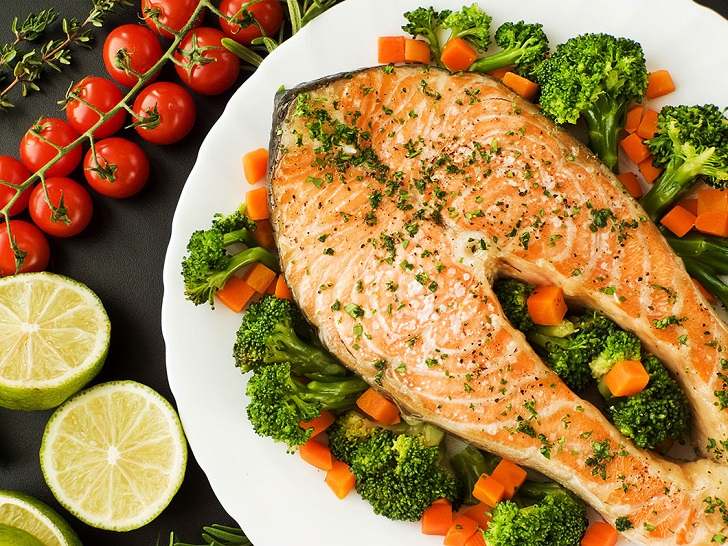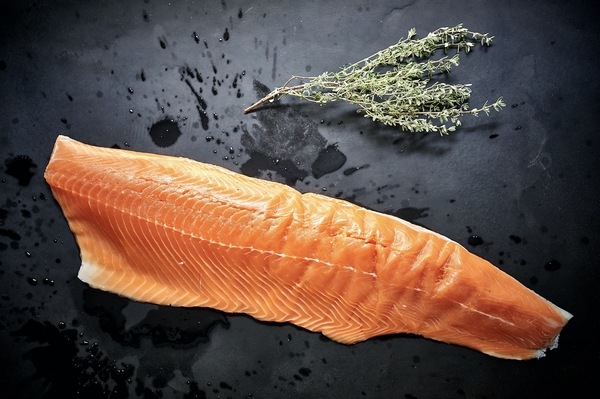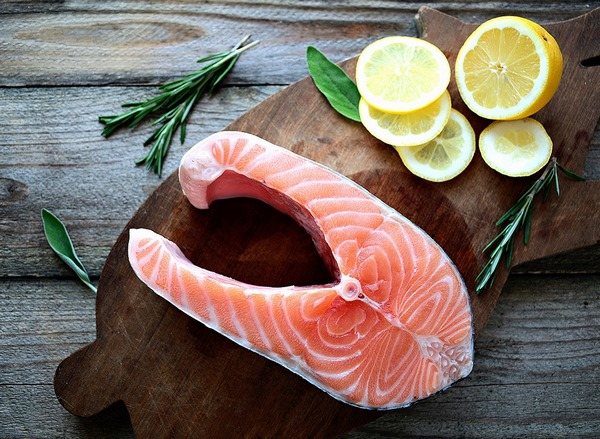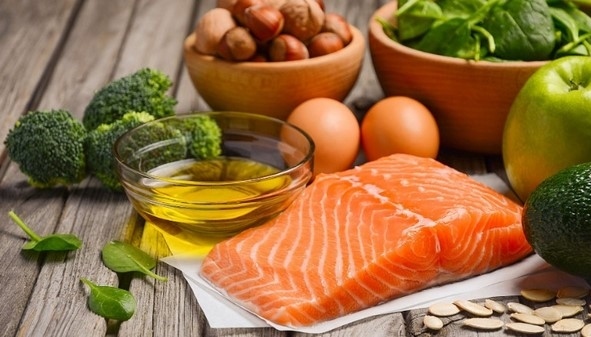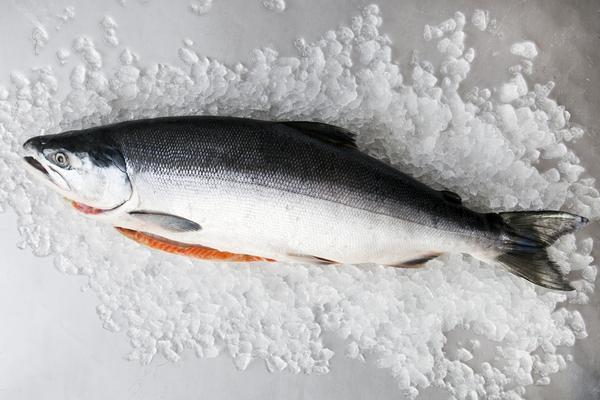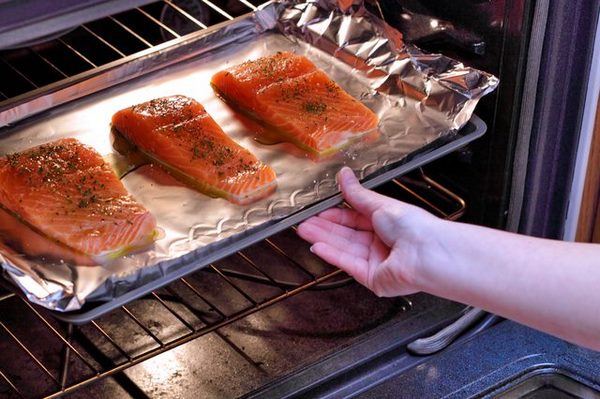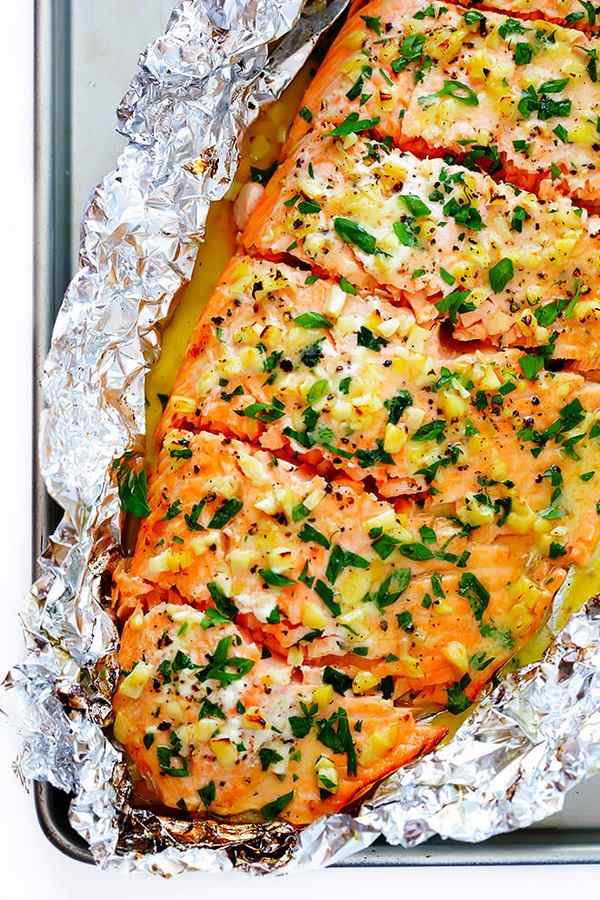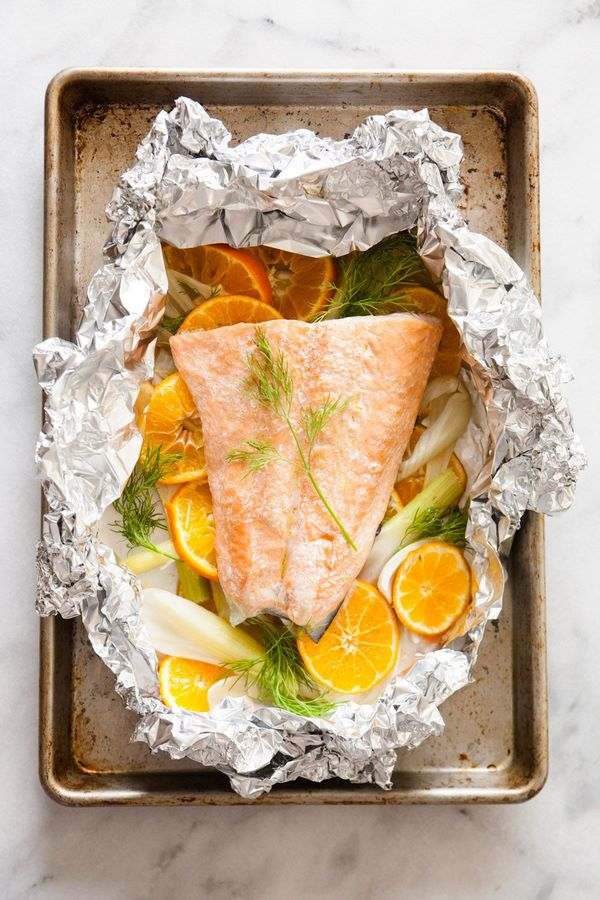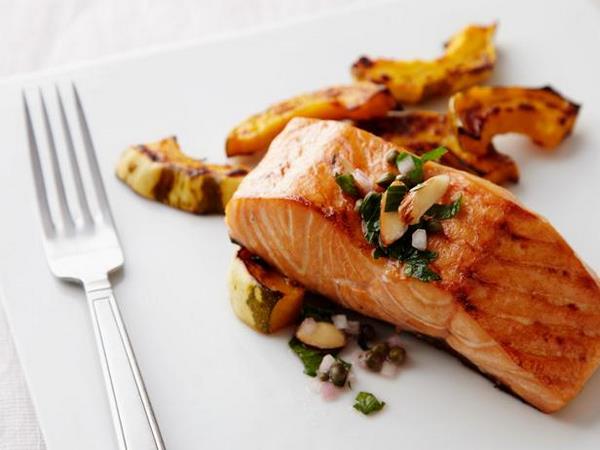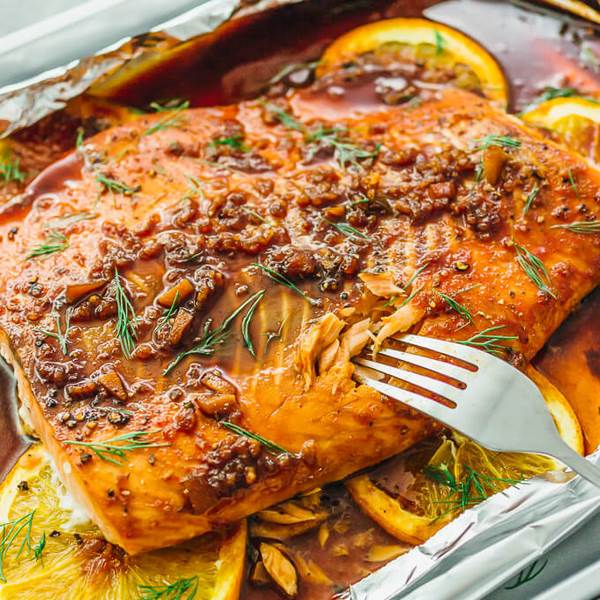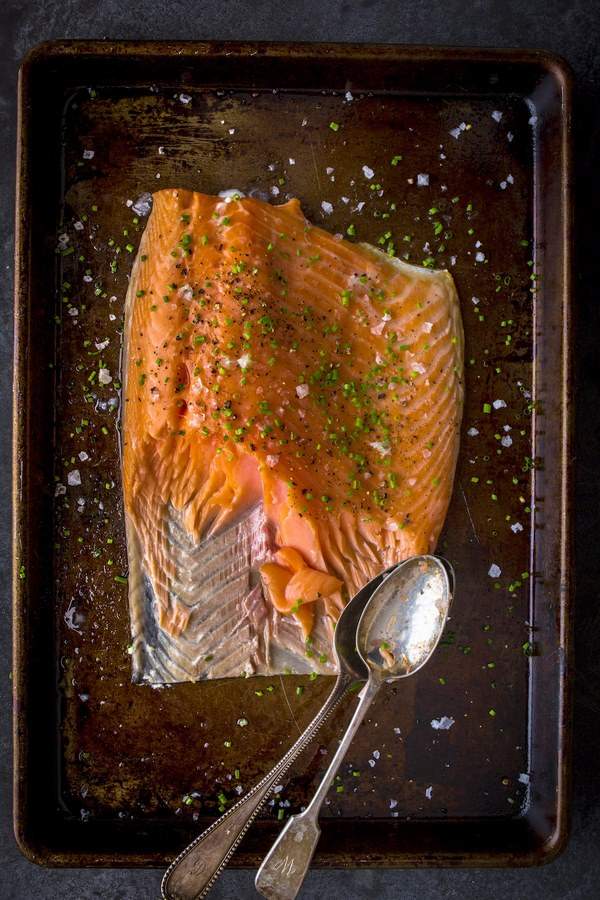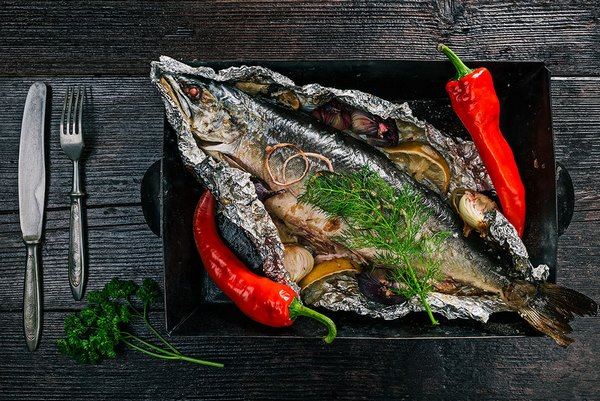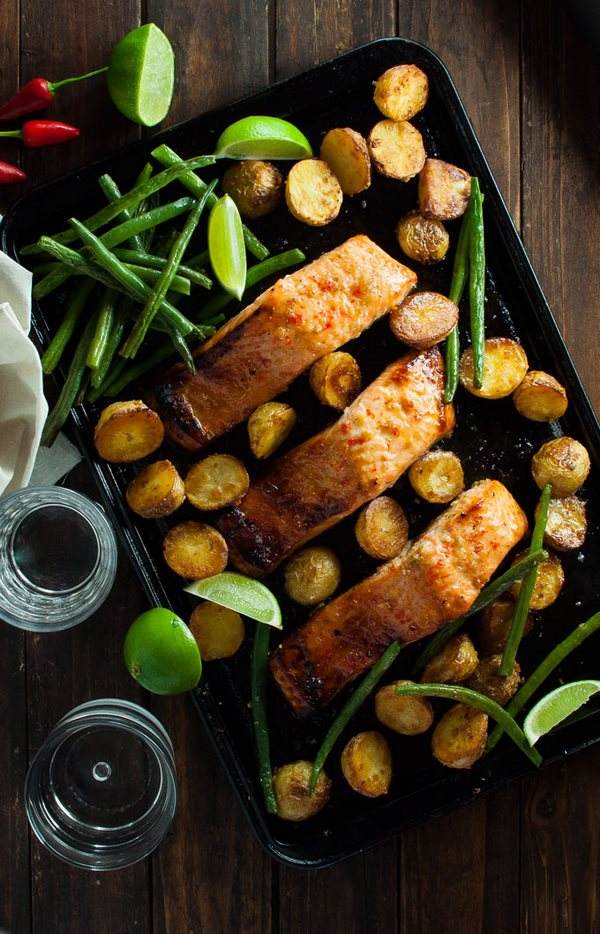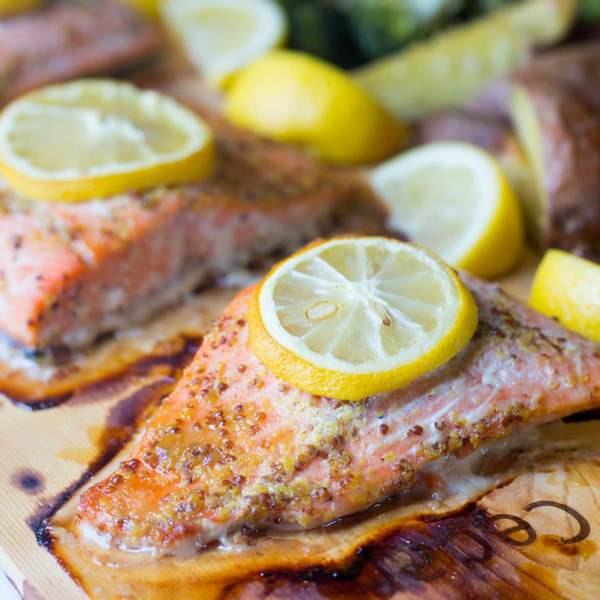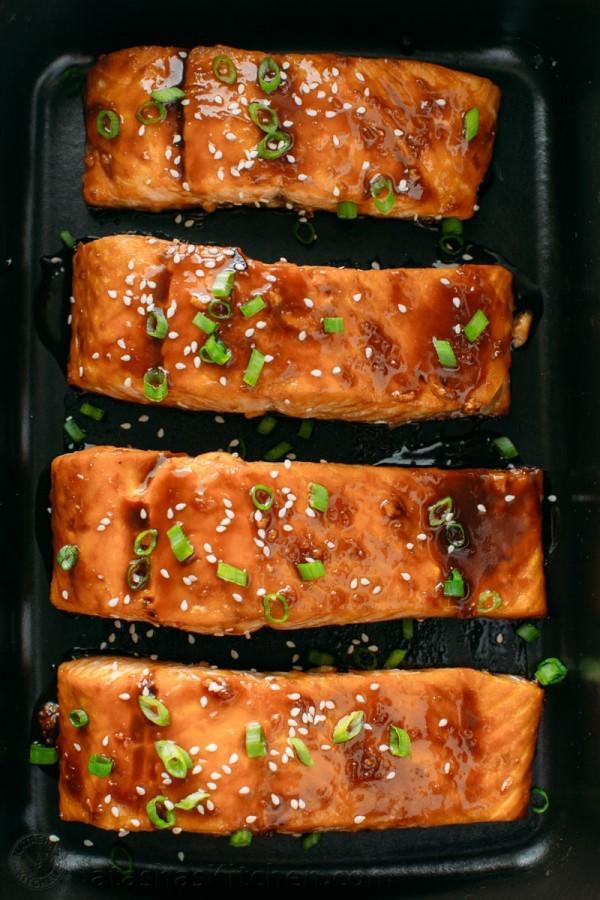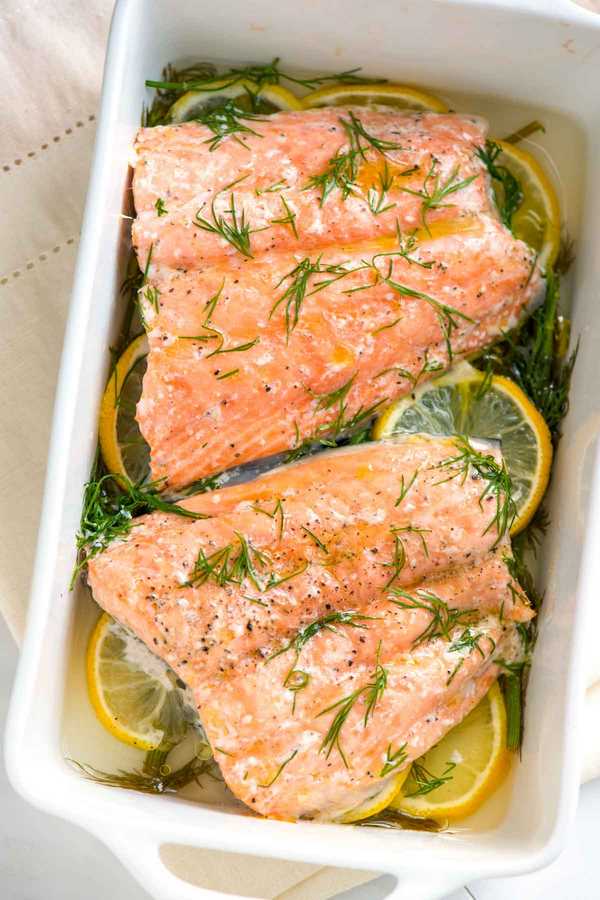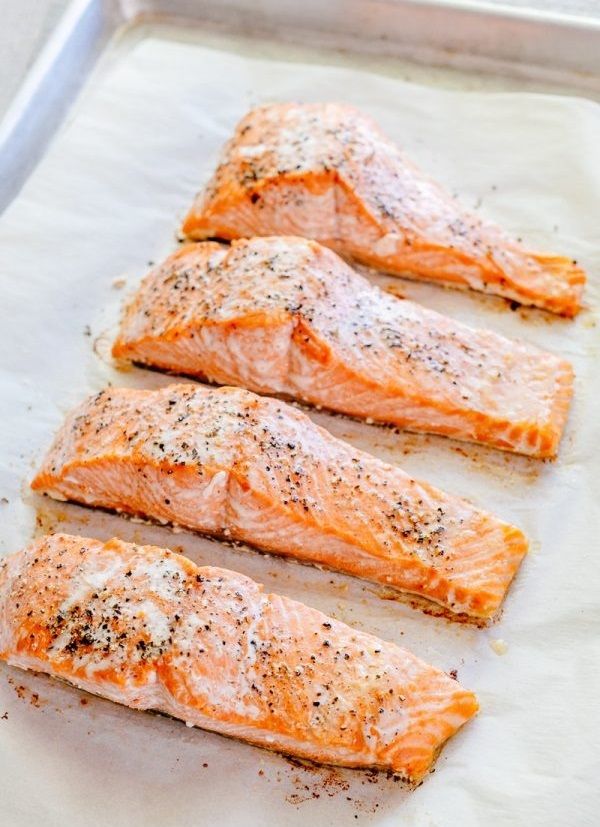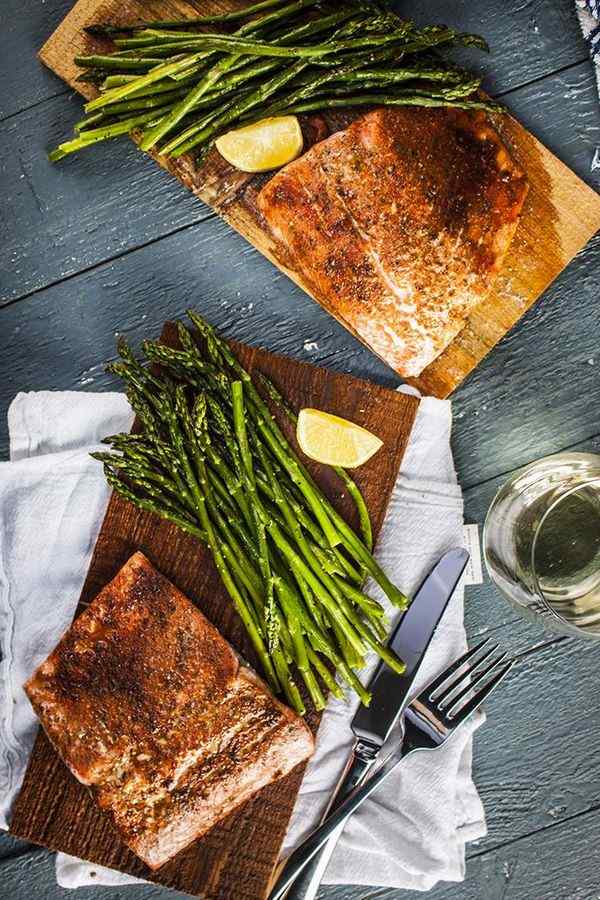How to cook salmon in the oven? Salmon is an incredibly tasty fish with high nutritional value. There are numerous ways to cook salmon – grill, broil, pan frying, poach, – but we shall focus your attention on baked fish as this is one of the best ways to preserve all the nutrients and serve a delicious meal to your family and friends. In addition we shall give you some useful tips for the different cuts, how to choose salmon and bake steaks, fillets, etc.
Perfectly baked salmon is moist, flavorful, and succulent. When overcooked, the fish is dry and flavorless. Of course, cooking time will depend on the size and thickness of the fish cut and the particular recipe that you chose.
Salmon has exceptional health benefits and is considered to be one of the most nutritious foods on the planet. It is rich in Omega-3 fats, which lower blood pressure. The fish is also rich in high-quality protein, B vitamins and potassium which also helps control your blood pressure and reduces the risk of stroke. Consuming fish on a regular basis helps losing weight and keeping it off and this is a great news for everyone who is conscious about their weight. Of course, there are many other benefits, but the bottom line is that this is a delicious and versatile fish, with unique delicate flavor and can be eaten cooked or raw in sushi and sashimi.
How to cook salmon in the oven – choosing the cuts and storing fish tips
If you have decided to bake salmon in the oven, you need to buy the fish first. The market offers wild-caught and farm-raised salmon and the choice will depend entirely on your personal preferences. You could go to a supermarket or your local fishmonger and choose a particular cut. The common fish cuts include fillets, steaks, and whole fish.
Salmon steaks are cut perpendicular to the spine and usually include the bones. You can find them fresh and frozen. Steaks are thick cuts which would need more cooking time than a boneless fillet, for example.
Salmon fillet is a parallel cut from the side of the fish and comes in two main varieties – a whole fillet, which is a side of salmon and pre-cut fillets, which are found in any supermarket. When you purchase a whole side of salmon (whole fillet) you can cut it into pieces or bake it intact. Pre-cut salmon fillets can be middle fillet and tail fillet, and the middle is thicker which means it will require a longer cooking time. Fish fillets are versatile and one of the most popular cuts as they are tasty and if you have any doubts which cut to use, going for a fillet is always a good choice.
Another option is to buy a whole salmon, fresh or frozen. You can bake it or cut it as per your liking. In case you are not sure how to cut a fish properly, it is best to bake it whole.
Here are some useful tips for buying and storing salmon at home.
- When you buy fish for your lunch or dinner, it is logical that you’d want it to be as fresh as possible. There are some key factors which you should know when choosing fish in general.
- When buying a whole fish – check the eyes. They should be bright and clear, and the skin should be moist. Steaks and fillets should look fresh and moist without any signs of browning at the edges. You can press the meat slightly. If it springs back, the fish is fresh.
- Remember that fish must be odorless. Should you feel any strong, unpleasant odor, do not buy it!
- When you buy pre-cut, pre-packed or frozen fish cuts, the first thing you need to check is the expiration date. Frozen salmon can be stored in the freezer for months. When you want to thaw it, you need to leave it in the refrigerator overnight. For speeding up the process you can put it in a Ziploc bag, if not vacuumed) and submerge it in cold water until thawed. Do not thaw fish at room temperature! If you thawed your salmon in the fridge, you can keep it for an additional 1 to 2 days in the refrigerator but if you thawed it in cold water, the fish must be cooked immediately.
- When you want to refrigerate cooked salmon, you should keep it for 3 to 4 days in the fridge and 4 months in the freezer.
How to cook salmon in the oven – important tips and mistakes to avoid
As easy as it is to cook salmon in the oven, there are some mistakes that happen quite often as a result of inexperience. The major concern of home chefs, especially beginners, is that the fish will be under-cooked. True, it does take some time to recognize when fish is cooked properly but we shall give you some useful tips which will be of help.
Buy good quality salmon! This is the first step to the perfect rich and flavorful dish. We mentioned above the basic rules for choosing fish. When you buy fillets or steaks, make sure that the cuts are about the same size and thickness so that they cook evenly for the same time.
Do not take off the skin! Some people like the crispy skin of the salmon, others don’t. However, even if you are one of those who do not like skin, do not hurry to take it off. The skin is an additional protective level between the hot roasting pan and you can discard it when the salmon is cooked.
Overcooking is the most common mistake. Salmon fillets or steaks do not require a lot of time to be cooked. Even if you are baking a whole salmon in the oven, it will be ready for less time than you thought! How to know when your salmon is done? You can gently poke the center of the fillet with your finger to check if it yields to flaky pieces. Do not do it with a fork as you may break up the fillet. Another method to check for doneness is to use a wooden skewer and touch it to your lower lip. If it feels hot, the fish is cooked. If not, it needs some more time.
Prepare the fish – if you have frozen salmon, thaw it in the refrigerator. Rinse, pat dry, and place in a single layer in a greased baking pan. Drizzle olive oil or melted butter and season with salt and pepper and add other herbs and spices – usually, dill, thyme, minced garlic, etc. If you want to take the skin off, you need to slide a sharp knife under the skin. Hold the skin with one hand and slide the knife between fillet and skin. Remove the salmon skin and discard it.
So, we come to the question – how to bake salmon in the oven? What is the proper time for fillets, steak or a whole salmon? As we said, cooking time can vary widely, depending on the cut, size and thickness. Obviously a thick fillet will need more time to cook and you will need to adjust the time for the particular cuts that you want to cook. Having said so, we need to make one thing sure – baking salmon in the oven does not mean that you can leave it and forget about it. On the contrary, keep an eye to the oven and check your fish frequently.
The rule of thumb is that 8-oz filets (220 g) skin removed will need 16-18 minutes in a preheated oven at 425°F (220°C).
A middle fillet will need about 18 minutes in a preheated oven at 375°F (190°C). For cuts of 1.5 inches (3.8 cm) thickness add a few more minutes and cook for about 23 minutes, but check for doneness. Tail fillets are thinner and will need about 8 to 12 minutes in a preheated oven at 375°F (190°C).
Whole salmon, 5 to 8 lbs. (2 to 3,5 kg) will need 50-60 minutes in a preheated oven at 375°F (190°C) or until an internal temperature of 135 °F (60°C) is reached.
How long to bake salmon in foil? This is a delicious way to bake salmon as the moisture is trapped inside the foil and prevents the fish from drying out. This is an excellent method for beginners without much cooking experience. A 4 oz. filet (120 g) will need about 10-12 minutes in a preheated oven at 400°F (200°C). A slow roasted whole salmon – 2 1/2lbs (1.1 kg) will need 45 minutes at 300°F (150°C).
Salmon in creamy sauce with spinach, dried tomatoes and garlic

